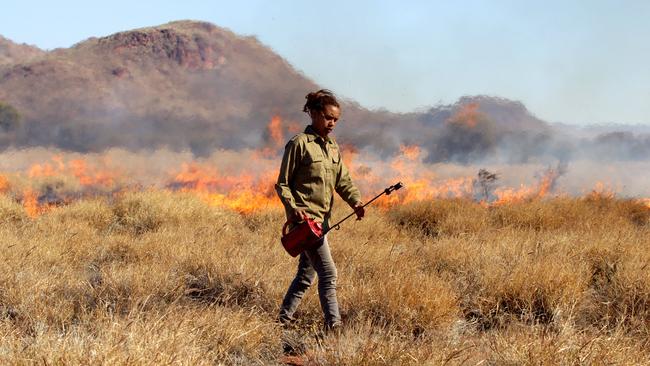Outback firestick farming returns to APY lands in a blaze of glory
FIRE has shaped the landscape of central Australia for millenniums, as Aboriginal tribes burnt the land.

FIRE has shaped the landscape of central Australia for millenniums, as Aboriginal tribes burnt the land as part of their survival.
As family groups walked across the central deserts, fire sticks would be dropped, or vegetation deliberately burnt to promote new plant growth and attract animals to hunt.
The frequent burning had the added benefit of reducing fuel load, and protecting the area from more devastating bushfires.
Today, rangers of the Anangu Pitjantjatjara Yankunytjatjara lands are attempting to recreate the ancient burning patterns of the Anangu people.
During winter, hundreds of controlled fires are lit across the 100,000sqkm lands to create firebreaks, encourage regrowth of certain plants and to return the land to a “patch mosaic” of vegetation at various stages of growth.
“The point of the fire program is to protect significant places, both culturally significant and environmentally significant,” APY land management program co-ordinator Jen Grindrod said.
“Ideally over time, we want to return the landscape to a patch mosaic of different vegetation ages like Anangu had created before people moved back into communities.”
One crew of rangers is focused on burning in areas around wild populations of the critically endangered Warru — the black-footed wallaby.
Using modern fire wands and petrol to create fire breaks, rangers hope removing the fuel load will protect native vegetation near a wild population of the elusive wallabies.
“It is about trying to protect one of the wild populations of Warru,” Ms Grindrod said.
She said the program would be aided with air support to identify areas that were overdue for burning.
The fire program has other benefits including reducing the number of feral animals, and stopping the spread of some weeds.
“There are still areas across the APY lands and other parts of the country that people just aren’t travelling,” she said.
“Fire is the key tool that we can use to manage a lot of the other issues that we face.”


